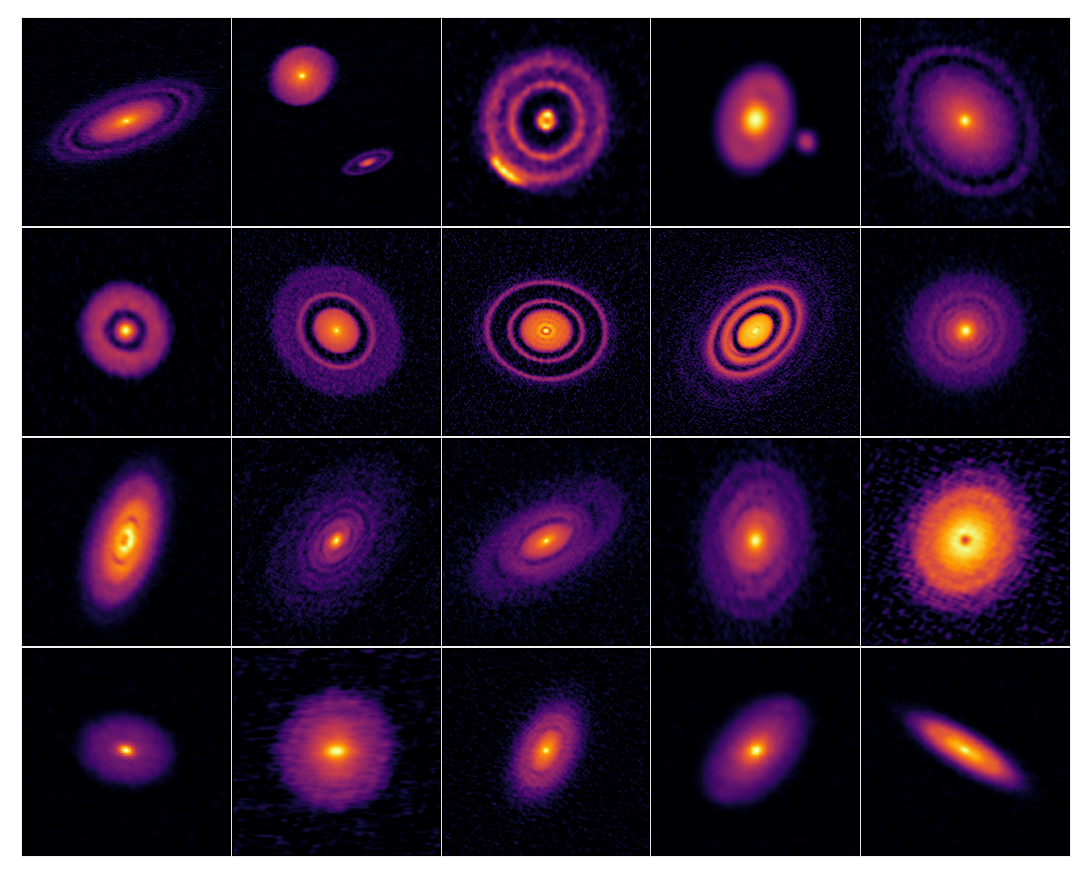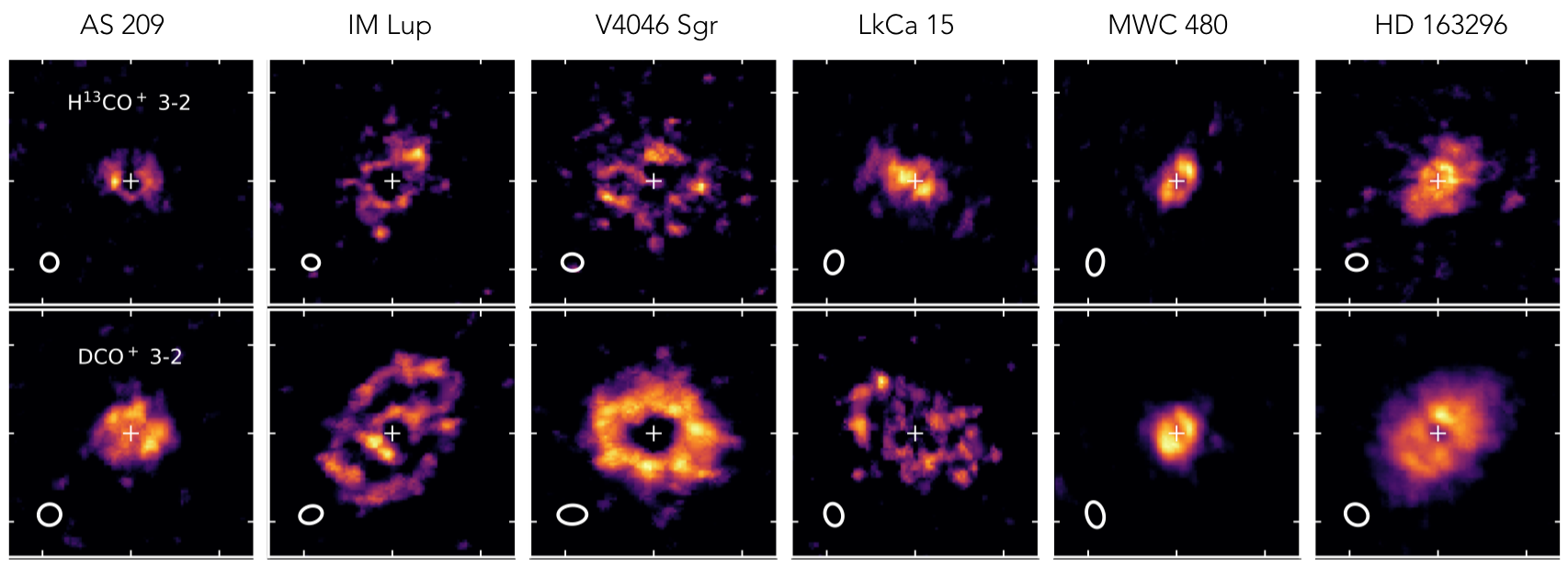
Observational signatures of planet-disk interactions
Where, when, and how do planets form? Protoplanets are generally not expected to be massive enough to image directly, but their gravitational influence can carve rings, spirals, and asymmetries in protoplanetary disks. Our ALMA observations, most notably from the DSHARP Large Program, have shown that complex structures are common in disks, but exhibit a wide range of properties. The widespread presence of gap and ring structures suggest that giant planet formation can occur rapidly (within a million years or so) at distances even past a hundred au from the star.

